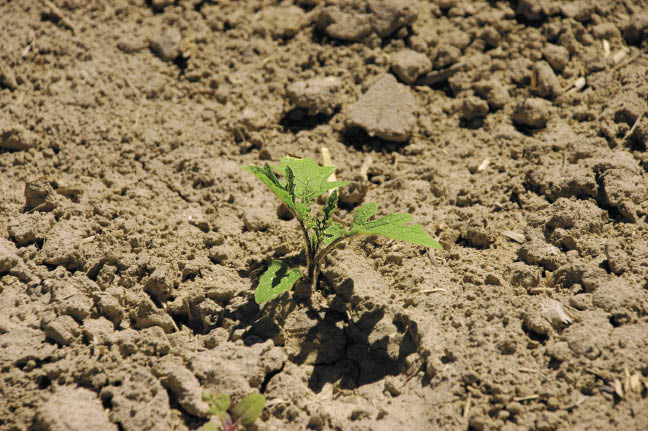
Ever since pale cyst nematode (PCN), Globodera pallid, was first detected in Bingham and Bonneville Counties in southeastern Idaho in 2006, potato researchers have been looking for new ways to eradicate the quarantine-inducing pests. Fields where PCN has been detected have been quarantined, taken out of potato production and PCN has been contained to southeastern Idaho.
Since the spring of 2007, chemical treatments in PCN-infested fields, such as methyl bromide fumigation, are being used and have been somewhat successful; however, it can be quite expensive and may become unavailable in the future. Also, the PCN cysts, which contain hundreds of eggs, can be resistant to fumigation. For that reason, biological eradication solutions are being tested.
One of the most viable options to PCN eradication may very well lie with a distant cousin of the potato-sticky nightshade (Solanum sisymbriifolium).
Suicide Hatch
The cysts can survive a very long time in the soil-sometimes up to 30 years-waiting for the presence of hatching factors. The problem is that there are exudates from potato roots, still somewhat unknown to researchers, stimulating the eggs to hatch. Juvenile nematodes emerge from the cysts and then establish a feeding site on potato or other host-plant roots, eventually becoming either a female or male adult. More eggs are produced and the cycle starts all over.
A key to their survival is to not hatch unless a host is present.
"Not only do the eggs in the cysts hatch in the presence of potato roots, but the potato also hosts the nematode," says University of Idaho Potato Cropping Systems Weed Scientist Dr. Pamela Hutchinson. "That's why it's devastating to the potato crop. If left uncontrolled, PCN can reduce potato yields up to 80 percent."
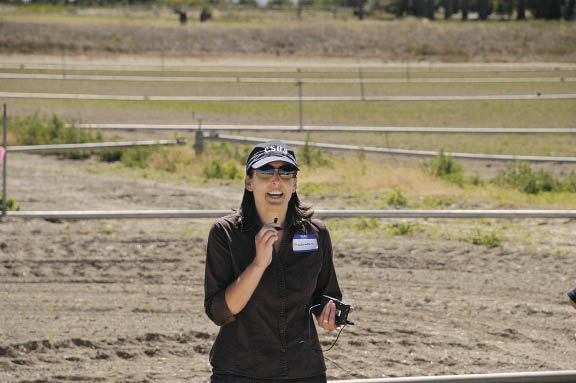 However, as researchers are finding, the potato's distant cousin sticky nightshade exudates the same chemical that induces hatching but is not a host for the nematode.
However, as researchers are finding, the potato's distant cousin sticky nightshade exudates the same chemical that induces hatching but is not a host for the nematode.
"The eggs hatch in the presence of sticky nightshade roots, but once the nematodes move out of the cysts, there's no place for them really to survive without a host, so they die."
Researchers have been calling this a "suicide hatch," and a handful of researchers are determining how viable sticky nightshade will be as a "trap crop" in Idaho.
Collaborative Effort
Chuck Brown, USDA-ARS research geneticist-potato breeder out of Prosser, Wash., first obtained sticky nightshade seed through the proper U.S. regulatory channels from the Netherlands, where it has been used for about 10-15 years and is commercially sold.
He grew the sticky nightshade in his greenhouse facility and produced seed, which was then sent to Dr. Louise-Marie Dandurand, PCN project director at UI campus in Moscow, Idaho.
She and her project team work in a secure, strictly controlled bio-safety greenhouse and lab facility on campus, observing PCN eggs hatching in the presence of exudates from potatoes and other plant species, including sticky nightshade.
Dandurand stated at the University of Idaho Potato Conference in January that they've seen reductions of 70 percent or greater in nematode populations in their lab environment.
At the UI Parma R&E Center, Southwest Idaho Research and Extension Center Dr. Mike Thornton is studying the agronomics of sticky nightshade as a trap crop-the best time to plant, seeding rates, how long of a growing season it needs, how much above-ground biomass and below-ground roots it could have in Idaho growing conditions, etc.
Meanwhile, Hutchinson at the Aberdeen R&E Center is looking at a few weed-related objectives. One of them is to make sure that if sticky nightshade is planted as a trap crop, it doesn't become a volunteer weed the following year.
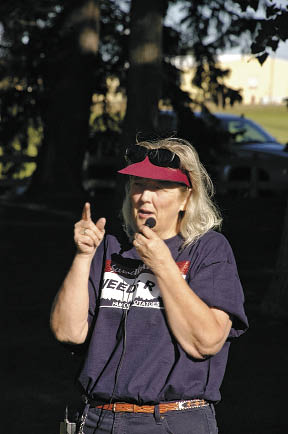 Perhaps her biggest challenge is controlling the pesky relative of both potatoes and sticky nightshade-hairy nightshade (Solanum sarrachoides)-which induces hatching and is also a host for nematodes. The challenge is to control one nightshade but not the other.
Perhaps her biggest challenge is controlling the pesky relative of both potatoes and sticky nightshade-hairy nightshade (Solanum sarrachoides)-which induces hatching and is also a host for nematodes. The challenge is to control one nightshade but not the other.
"It wouldn't be any good if you had that weed out there or other nightshade weeds that will host the nematodes, because then it wouldn't be worth planting the trap crop," she says.
Another challenge Hutchinson faces is the short growing season in southeastern Idaho-often times two weeks shorter than Parma-along with the painfully slow growing process for sticky nightshade.
"With the sticky nightshade, you need the soil to be at least 50 degrees F before it will even germinate. Once you plant it, it takes about a month before it emerges. And then it still takes two or three weeks before it even starts growing to any height," she says. "We're concerned our season is too short," she says, but then adds, "it seems from what Mike Thornton is doing and what I've been able to do over here in southeastern Idaho.we have roots that go fairly deep."
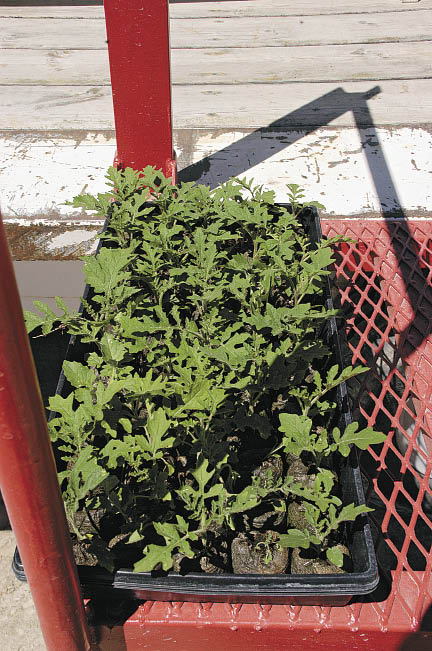 The Idaho State Department of Agriculture is involved in the process to help regulate the sticky nightshade research.
The Idaho State Department of Agriculture is involved in the process to help regulate the sticky nightshade research.
"They're helping us do that in a cooperative manner, to be in on the regulation of how the trap crop is brought in and how it's grown," she says.
Hutchinson says that they are also grateful for the funding from the Idaho Potato Commission and other entities, and collaboration with other groups such as the Animal and Plant Health Inspection Services (APHIS), especially Tina Gresham out of their Idaho Falls, Idaho, office.
Sticky Optimism
Hutchinson says once they get more research done with sticky nightshade in Idaho, it could be "very economical and successful," but she points out that this trap crop must be grown the entire growing season.
"It isn't like some of the green manures that we plant after wheat harvest and then plow it down right before we get a hard frost in the fall. It needs to grow a whole summer so we make sure we have roots growing large and deep enough to get the PCN eggs to hatch," she says. "So that would be the challenge for the grower since no commercial crop can be grown during the trap-crop year.
One thing that makes sticky nightshade a pain to work with-literally-is the painful thorns-technically, spines. Brown is seeking to develop a spineless sticky nightshade to make the trap crop easier to work around.
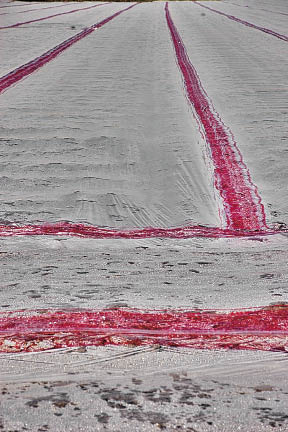 "My crew and I often wear double gloves," Hutchinson says. "It can be somewhat painful to walk around in our test plots unless you also have long pants and boots, even with the less-spiny variety we were able to get this past year for our research."
"My crew and I often wear double gloves," Hutchinson says. "It can be somewhat painful to walk around in our test plots unless you also have long pants and boots, even with the less-spiny variety we were able to get this past year for our research."
Brown is also seeking to develop a sticky nightshade variety that is sterile so it doesn't produce berries that can go to seed. Those will, in turn, be handed over to Dandurand to test with nematode cysts to make sure eggs still hatch but the nematodes can't feed.
Hutchinson, Dandurand and other researchers working with sticky nightshade are very optimistic since the trap crop seems to do well in Idaho conditions and the suicide hatch rate is high.
"We're hoping that, in conjunction with other control methods-such as fumigation, which would maybe get 40 percent hatch-we could get 100 percent of those eggs to hatch. After this type of success with an economical feasible approach, the grower could take those fields out of quarantine and plant potatoes again. So that means this is one nightshade that will be good for Idaho." PG